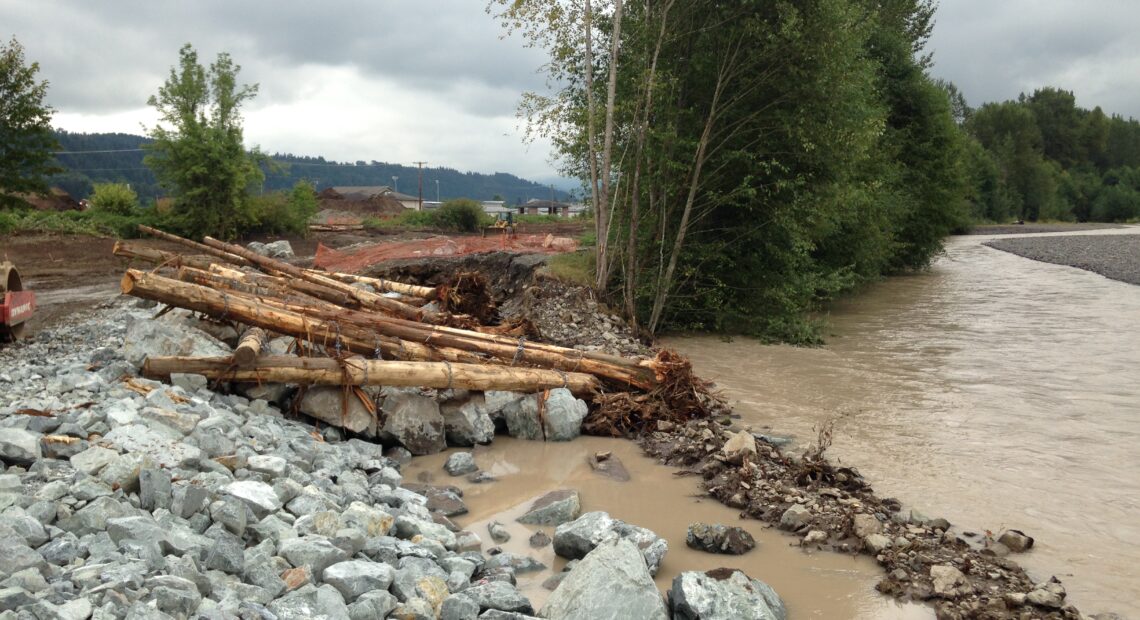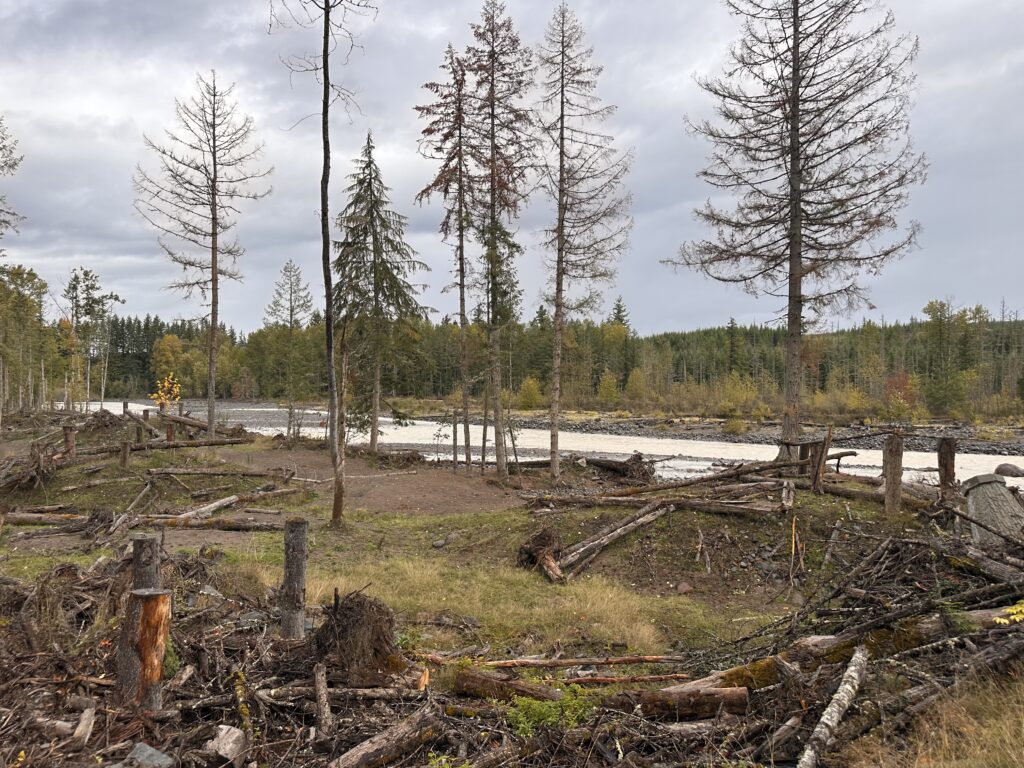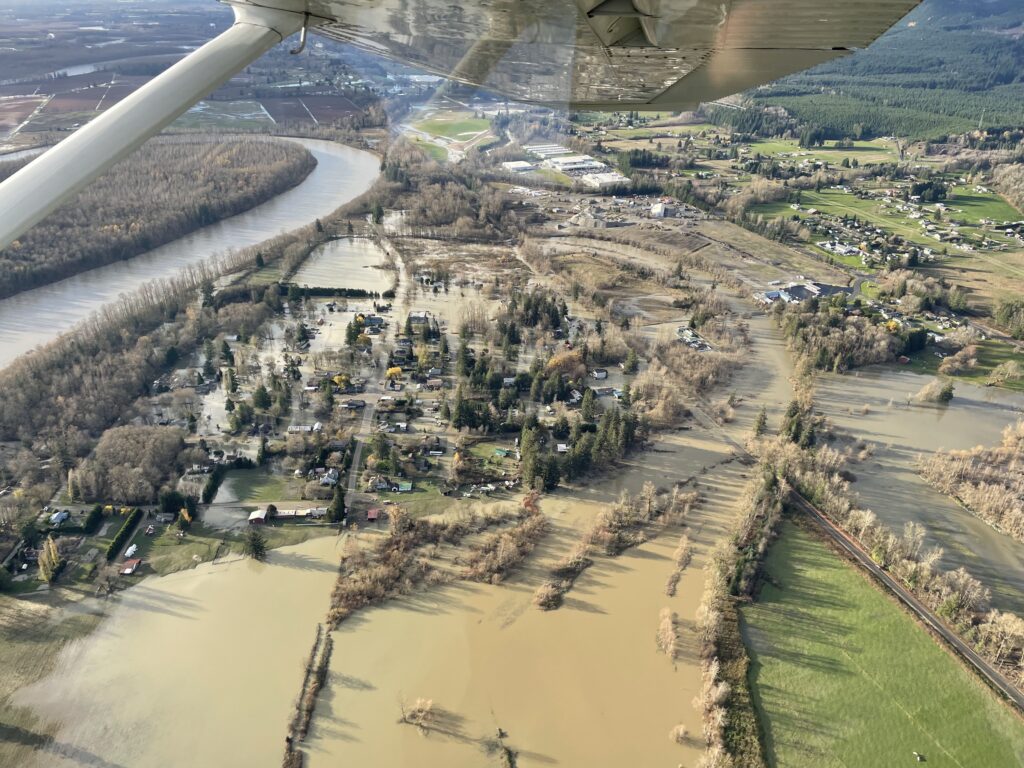
Rethinking levees to reduce flood risk
What solutions are Washingtonians seeking to manage floodplains as the climate changes? – Part Two
Listen
(Runtime 0:59)
Read
Washington Rep. Steve Tharinger (D-24th District) became intimately acquainted with levee setbacks when he discovered the levee protecting his house on the lower Dungeness River was not only not protecting his house, but harming the ecosystem too.
“I sold my house and the five acres in a barn we had so that we’d have more room to move that levee back and give the river more room,” Tharinger said.
That means the levee could be set back further away from the river, thereby giving the river more space to meander across the landscape, dispersing the water that collects in heavy rain events more naturally. Experts say that is critical as the likelihood of those weather events is increasing with climate change.
The story of Tharinger’s community is a common one.
There is a balance in how we respond to floods or prepare for their inevitability — and the levees that tightly restrict water from where it would naturally flow are known to have problems.
When levees are built, they reduce the possibility of some flooding, but inadvertently might actually increase how many people are exposed to the hazard of flooding. A study published this year in “Nature Sustainability” found that in the contiguous United States, levee construction is associated with a 62% increase in urban expansion in floodplains.
Guillaume Mauger, research scientist at the University of Washington, said because levees restrict water flow, they increase the volume of water rushing through confined spaces. Think of it like blocking off the flow of water in a child’s water table, so all the water rushes through one source.
Levees also don’t protect against catastrophic flooding and can breach — fail and let water through. That happened in Monterey County in March which, in turn, caused more damage.
Flooding does still happen even with levees in place — so then what? Most standard home insurance does not provide flood protection. In the state of Washington, homeowners and property owners are only required to have flood insurance if the government-backed mortgaged property is in a Special Flood Hazard Area.
“A number of people in Whatcom County that were flooded, many of them do live outside of the most current, mapped FEMA floodplain,” said Mary Huff, floodplain management unit supervisor at the Washington State Department of Ecology, referring to the outcome of floods in 2021. That meant some residents may not have had insurance to help with property damage recovery.
In fact, some homeowners in Whatcom County are still waiting for federal funding to buy out their homes and property destroyed by the floods.
Changing management systems
How the state managed floodplains in the past, through heavily-engineered solutions that restricted rivers to tight, straight channels, is both expensive to maintain, not foolproof and can be disruptive to the natural ecology, Huff said.
“A lot of the times they fail, they don’t actually end up doing the job,” Huff said.
That’s where Floodplains by Design — a program overseen by the Department of Ecology with some nongovernmental partnerships — comes in. The program funds projects for communities to rethink floodplain management, often through levee setbacks.
“The idea behind that is just to create more space for the river to move. That’s what rivers do,” Huff said.
Giving rivers more space is meant to reduce flooding in developed areas, making for safer communities.
“We really can’t control flooding, I think that’s another thing that we’ve learned over time,” Huff said. “We really can just reduce flood risks.”
The other aspect of this is that floodplains have ecological benefits.
“In their natural form, floodplains provide critical habitat for salmon, especially baby salmon, because they provide low velocity water that’s high in food,” said Brandon Parsons, director of river restoration with American Rivers. “So, the baby salmon can go there, eat a bunch, get big before they make their trip back out to the ocean.”
Floodplains also recharge groundwater — where surface water moves into an underlying aquifer, which can help store floodwater.
“In a properly functioning floodplain, you can actually have reduced flood risk downstream,” Parsons said.
Of course, it is not feasible to get rid of or move every levee or dike — communities are built in the spaces these structures protect. In the meantime, flooding continues to happen and impact the people living in floodplains.
Huff said conversations with local, state and federal partners about how to prevent future development in floodplains is another way people are working to reduce future risk.
The Department of Ecology has awarded $283 million for various projects in 18 counties in Washington in the decade the program has been around. The state has contributed around $60 million per biennium to the program. A map of where projects have been completed in the state can be found here.
The state did use some money from the Climate Commitment Act to partially fund Floodplains by Design this year — $10-15 million of the $60 million total, according to Tharinger.
“We’re not moving as fast as we probably need to with the amount of climate change,” Tharinger said.


















